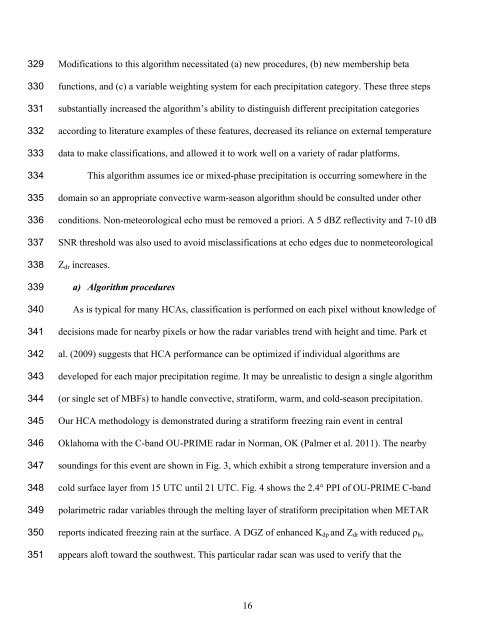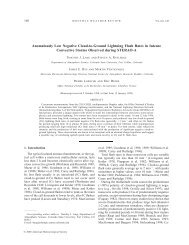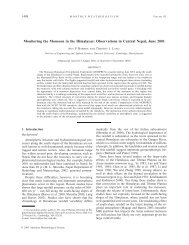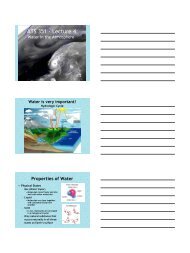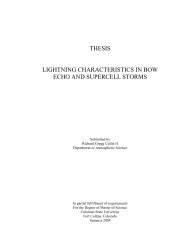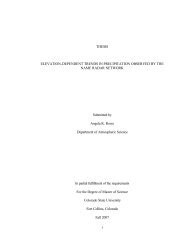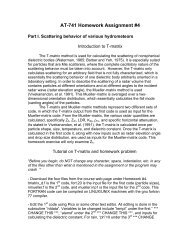1 A dual-polarization radar hydrometeor classification algorithm for ...
1 A dual-polarization radar hydrometeor classification algorithm for ...
1 A dual-polarization radar hydrometeor classification algorithm for ...
You also want an ePaper? Increase the reach of your titles
YUMPU automatically turns print PDFs into web optimized ePapers that Google loves.
329330331332333334335336337338339340341342343344345346347348349350351Modifications to this <strong>algorithm</strong> necessitated (a) new procedures, (b) new membership betafunctions, and (c) a variable weighting system <strong>for</strong> each precipitation category. These three stepssubstantially increased the <strong>algorithm</strong>’s ability to distinguish different precipitation categoriesaccording to literature examples of these features, decreased its reliance on external temperaturedata to make <strong>classification</strong>s, and allowed it to work well on a variety of <strong>radar</strong> plat<strong>for</strong>ms.This <strong>algorithm</strong> assumes ice or mixed-phase precipitation is occurring somewhere in thedomain so an appropriate convective warm-season <strong>algorithm</strong> should be consulted under otherconditions. Non-meteorological echo must be removed a priori. A 5 dBZ reflectivity and 7-10 dBSNR threshold was also used to avoid mis<strong>classification</strong>s at echo edges due to nonmeteorologicalZ dr increases.a) Algorithm proceduresAs is typical <strong>for</strong> many HCAs, <strong>classification</strong> is per<strong>for</strong>med on each pixel without knowledge ofdecisions made <strong>for</strong> nearby pixels or how the <strong>radar</strong> variables trend with height and time. Park etal. (2009) suggests that HCA per<strong>for</strong>mance can be optimized if indivi<strong>dual</strong> <strong>algorithm</strong>s aredeveloped <strong>for</strong> each major precipitation regime. It may be unrealistic to design a single <strong>algorithm</strong>(or single set of MBFs) to handle convective, strati<strong>for</strong>m, warm, and cold-season precipitation.Our HCA methodology is demonstrated during a strati<strong>for</strong>m freezing rain event in centralOklahoma with the C-band OU-PRIME <strong>radar</strong> in Norman, OK (Palmer et al. 2011). The nearbysoundings <strong>for</strong> this event are shown in Fig. 3, which exhibit a strong temperature inversion and acold surface layer from 15 UTC until 21 UTC. Fig. 4 shows the 2.4° PPI of OU-PRIME C-bandpolarimetric <strong>radar</strong> variables through the melting layer of strati<strong>for</strong>m precipitation when METARreports indicated freezing rain at the surface. A DGZ of enhanced K dp and Z dr with reduced ! hvappears aloft toward the southwest. This particular <strong>radar</strong> scan was used to verify that the16


